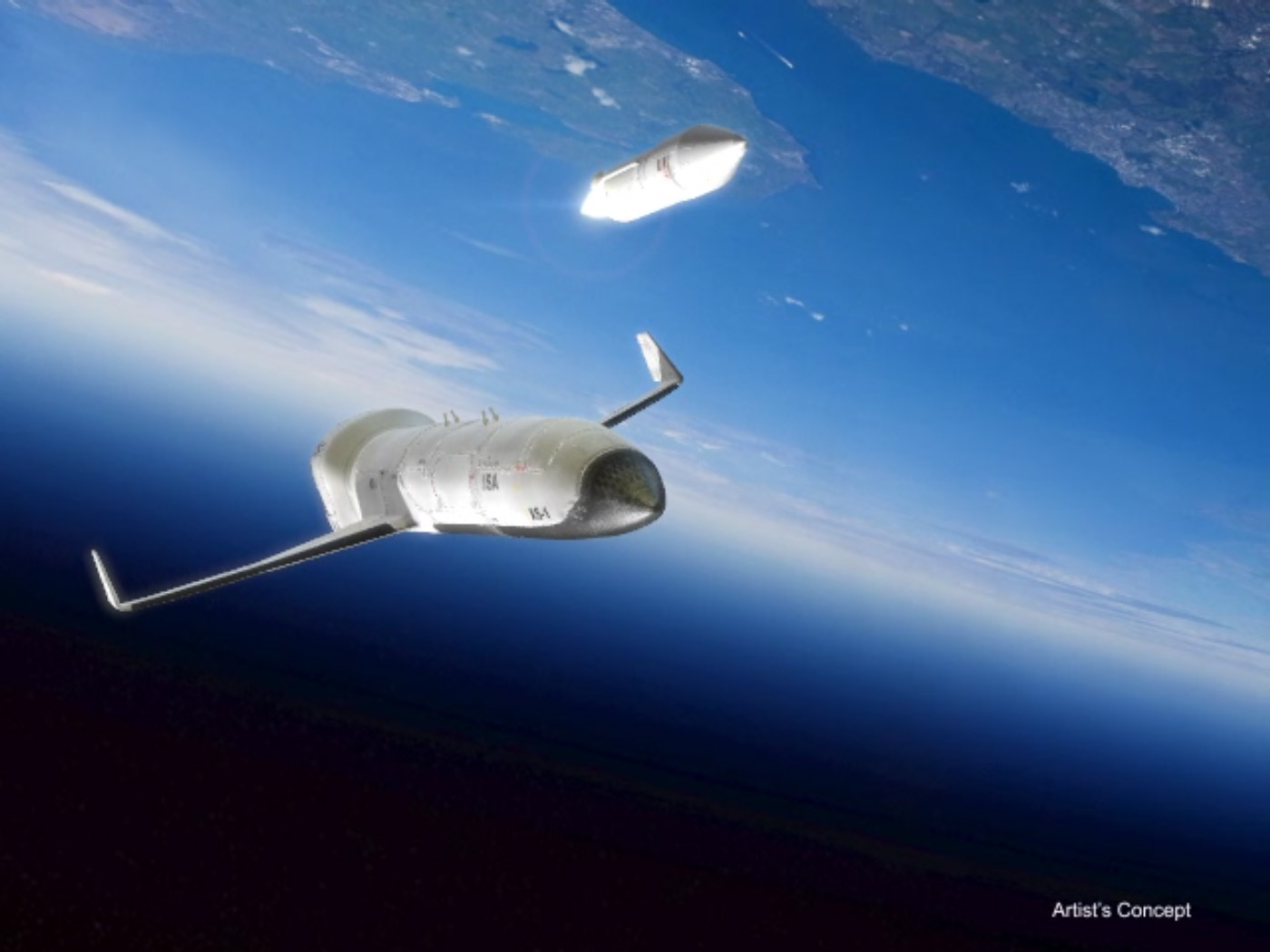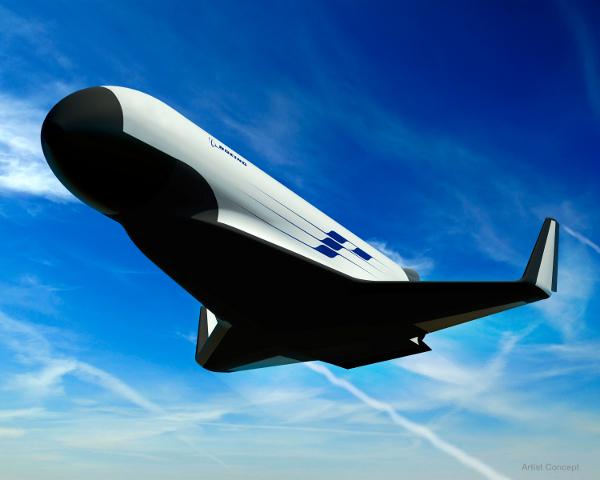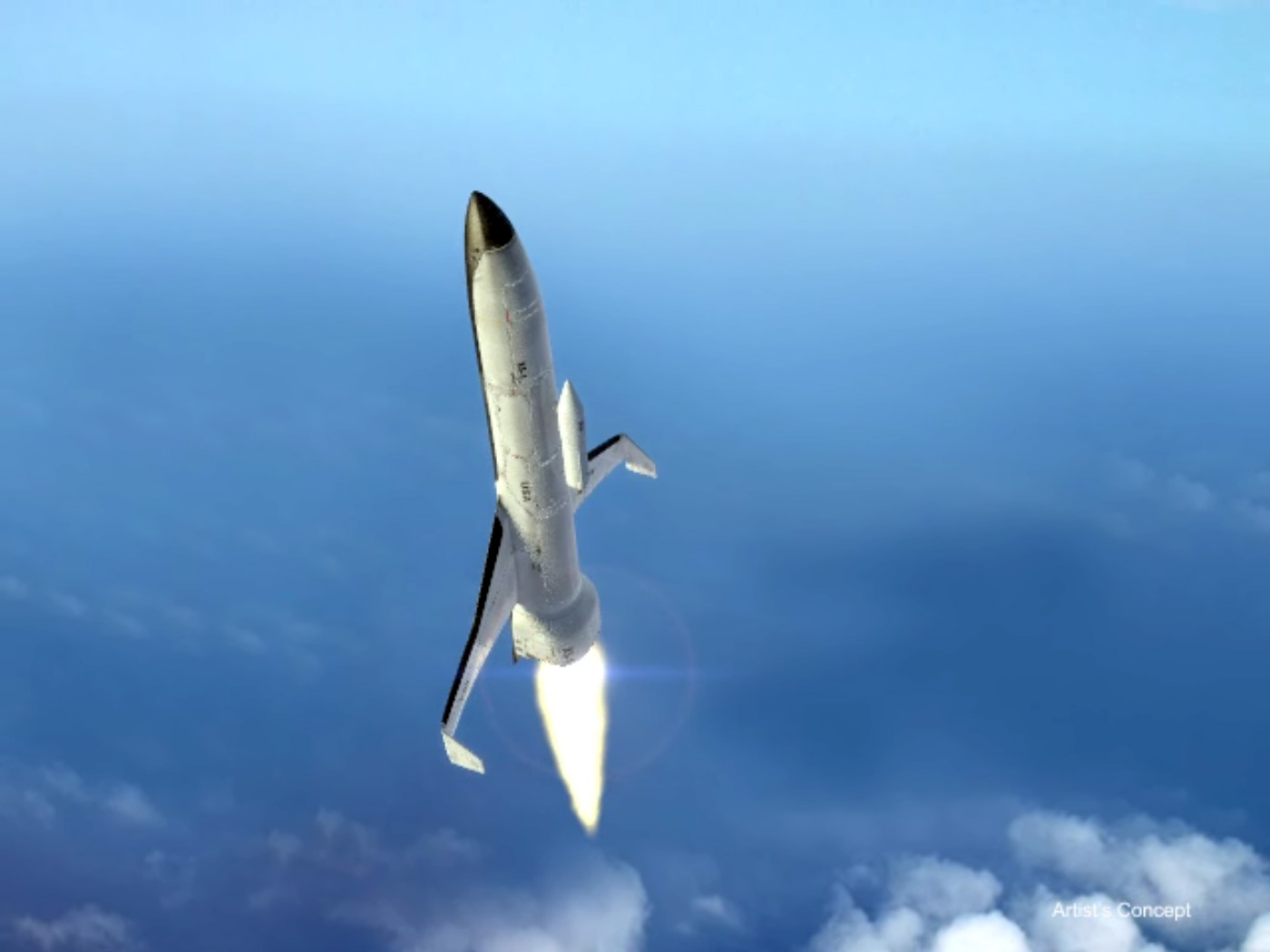
The Defense Advanced Research Projects Agency (DARPA) is moving forward with its goal of developing the next generation XS-1 Experimental Spaceplane aimed at creating a fully reusable unmanned vehicle to launch small payloads into orbit at radically lower costs.
The goal is to create a cost-effective launch vehicle providing aircraft-like operations to space that can rapidly deploy small satellites to low-Earth orbit using expendable upper stages, and do so on a routine basis and with quick turnaround and minimal ground infrastructure.
DARPA has now taken the next step by awarding Phase 1 design contracts to three contract teams that combine the best talents of experienced aerospace companies with new space upstarts in a bid to forge innovative designs for the XS-1 spaceplane.
XS-1 is seen as having wide utility not just for the military, but also for the civilian and private space sectors.
The winnings teams are:
– The Boeing Company (working with Blue Origin, LLC)
– Masten Space Systems (working with XCOR Aerospace)
– Northrop Grumman Corporation (working with Virgin Galactic)
DARPA aims to create a new paradigm for more routine, responsive, and affordable space operations to deploy small satellites and develop technology for next-generation hypersonic vehicles.
The XS-1 builds on several existing space flight programs but leaps far beyond them, including the Orbital Sciences Pegasus and the Boeing/Air Force X-37.
“We chose performers who could prudently integrate existing and up-and-coming technologies and operations, while making XS-1 as reliable, easy-to-use and cost-effective as possible,” said Jess Sponable, DARPA program manager, in a statement.
“We’re eager to see how their initial designs envision making spaceflight commonplace—with all the potential military, civilian and commercial benefits that capability would provide.”
XS-1 would be comprised of a first stage hypersonic vehicle flying to suborbital altitude. It would then deploy the expendable upper stage, carrying a small satellite weighing 3,000 to 5,000 pounds, to low-Earth orbit (LEO).
The reusable first stage would then fly back to a runway landing on Earth, where it would be processed for the next flight as soon as the next day.
See the DARPA video below:
Video caption: DARPA’s Experimental Spaceplane (XS-1) aims to develop a fully-reusable unmanned vehicle that would provide aircraft-like access to space and deploy small satellites to orbit using expendable upper stages. Credit: DARPA
DARPA envisions that “modular components, durable thermal protection systems and automatic launch, flight and recovery systems should significantly reduce logistical needs, enabling rapid turnaround between flights.”
The key XS-1 technical goals outlined by DARPA are flying 10 times in 10 days, flying to Mach 10+ at least once, and launching a representative small payload to orbit.
The economic goal is to substantially reduce the cost of access to space for the 3,000- to 5,000-pound (1,361-kg to 2,268-kg) payloads to less than $5 million per flight, compared to current rates of tens to hundreds of millions of dollars.
Boeing was awarded $4 million under the Phase 1 preliminary design contract and plans to work on a reusable first stage launch vehicle that would operate under principles much like a modern jetliner.

“Our design would allow the autonomous booster to carry the second stage and payload to high altitude and deploy them into space. The booster would then return to Earth, where it could be quickly prepared for the next flight by applying operation and maintenance principles similar to modern aircraft.” said Will Hampton, Boeing XS-1 program manager, in a statement.
“Drawing on our other innovative technologies, Boeing intends to provide a concept that uses efficient, streamlined ground infrastructure and improves the turnaround time to relaunch this spacecraft for subsequent missions.”

Phase II of the XS-1 competition follows in 2015, when DARPA awards a production order to build the experimental spaceplane and conduct demonstration flights.
Stay tuned here for continuing updates.
Want to keep up-to-date with all things space? Be sure to “Like” AmericaSpace on Facebook and follow us on Twitter: @AmericaSpace




This should get F-35’s funding.